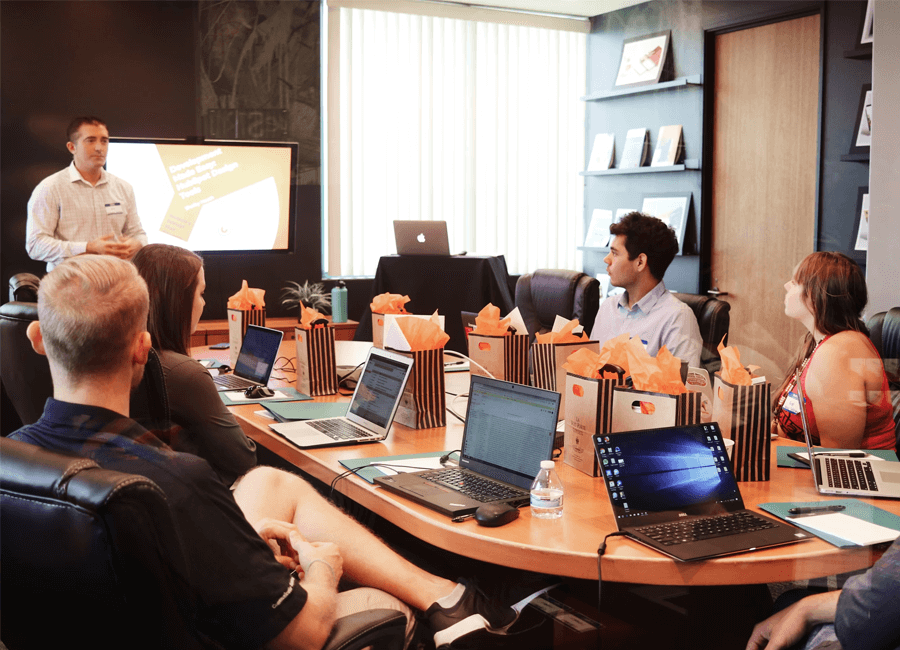Innovation is a broadly applied term for a very specific concept. It is a significant change to the well-established status quo, mostly considered positive due to its ability to revolutionise processes, methods, tools, industry practices, wide-spread ideas, job roles and more.
Sometimes it's predicted and widely-anticipated, other times it happens completely by accident. Take the invention of penicillin as an example. In 1928, Alexander Fleming returned from holiday to a discovery that revolutionised the world of medicine forever; his petri dish of staphylococcus was unknowingly contaminated and grew a mould that contained a chemical that fought back against the bacterial infection. After the first purification and synthesis of the chemical over a decade later, the impact of this innovation was immediate and profound. According to British haematologist and biographer Gwyn Macfarlane, the discovery of penicillin was “a series of chance events of almost unbelievable improbability”.
Such accidents are not prone to happen, so we common folk have to manufacture these innovative events ourselves. Spot opportunities, track trends and monitor our competitors and customers. Market research is one of the best tools to help insight experts and business professionals everywhere.
| Tweet This | |
| Businesses nowadays are well-used to manufacturing innovation through various means, but the best ones are created through market research. |
The Link Between Innovation and Insights
Innovation in businesses can shoot them into the forefront of their industry, and any movement such as this can take many different forms, including:
- New product development
- Strategic development/business model innovation
- Customer experience refinement
- Policy and process overhauling
- New department development
- Solving business problems
And all of these movements are manufacturable, whether directly or indirectly through insights. The link between innovation and success is market research. As much as market research is understood as a necessary component of modern business operations, there are still many cases where research and subsequent insights aren’t taken as seriously and applied as far as they’re relevant in daily decision-making processes across organisations and industries. It has become a poignant and frustratingly persistent challenge for modern insight experts to incite insights activation in stakeholder organisations, so much so that we have become all too familiar with the battle cries “let’s get to the top table” and “here’s another external industry technique we can try to use to gain the attention of stakeholders”.
There are a number of problems with these battle cries, for one, the second one isn’t actually necessary. We are well adept at gaining stakeholders’ attention – where we often fail is making good use of that attention and laying down convincing arguments that persuade stakeholders to use the insights more than they currently do. We fail to educate stakeholders on the power of insights and show them ways in which they can apply existing insights to create and take advantage of new innovative opportunities.
Yes, we are masters at tracking customer behaviours, activity and opinions through market research, putting those insights into a neat little report that is likely to be used once and then discarded when the next business obstacle presents itself. Reusing insights time and again until they are no longer relevant or become out of date is a great way to get the most ROI out of market research, but that’s not exactly what happens, and market research is then seen as a costly exercise with only real-time value. But this doesn’t mean our efforts are an exercise in futility, in fact, there are success stories in many brands and industries that show market research as a crucial element in manufacturing innovation that propels businesses into the forefront of their industries, and future-proofs their success for a little while longer yet.
Success stories such as Lego, Specsavers, and Starbucks are widely celebrated by our industry. Starbucks has relied on market research for decades now to help track customer behaviours, get ahead of trends, create new elaborate coffee-based concoctions to delight their customer base, and come up with creative marketing ideas to entice more people to frequent their stores. Lego has a huge online crowd-sourced community of building-block enthusiasts who shared and debate new ideas for Lego sets every single day. They have successfully broadened their target audience to include both adults and children of many ages across many entertainment sectors, partnering with other firms such as Disney, IKEA, Levis, Epic Games, Ferrari, and more to deliver a widely appealing range of products. While Starbucks has a unique challenge of being both a healthcare provider and a retail business, and so must balance their brand visage correctly to attract and retain the right customers. They have a dedicated online research panel filled with customers who provide insights on their experiences with the brand, opinions on product names and service development, and their views on potential brand communications.
Whether it has a large overarching impact or smaller inputs in daily decisions, market research is the key to manufacturing innovation in all areas of an organisation. Our challenge, as it has ever been, is to help stakeholders understand this and use insights more to achieve more.
| Tweet This | |
| Manufacturing innovation can seem like a dangerous business, however, there are ways to do it successfully without any flaws. |
Innovation in Customer Salience
Innovation can be fast-moving or slow-paced, it all depends on the rate of acceptance within an industry or organisation. Technological innovation, for example, is exceedingly fast-paced due to the potential to automate aspects of job roles that are tedious, time-consuming and negatively regarded.
Customer Salience is an innovation in and of itself, that also has the potential to incite innovation. While it is an endeavour that will take time to embed into organisational culture, it can also be fast-paced, able to unlock innovative opportunities as more teams start to consider customer insights in their daily decision-making. However, this is only able to happen when insight experts adequately convince stakeholders of its importance and powers to better businesses.
Insight experts and advocates will be the ones to take the first steps into customer saliency; using other businesses as examples to convince key stakeholders and creating new strategies that will ultimately democratise access to insights and place customers into consideration with each new challenge, change or task, and sharing the ability to manufacture innovation with each new insight shared.


















